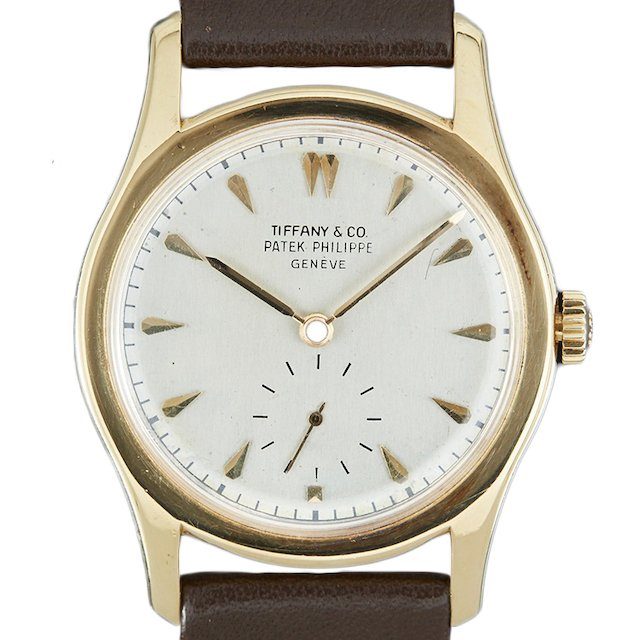
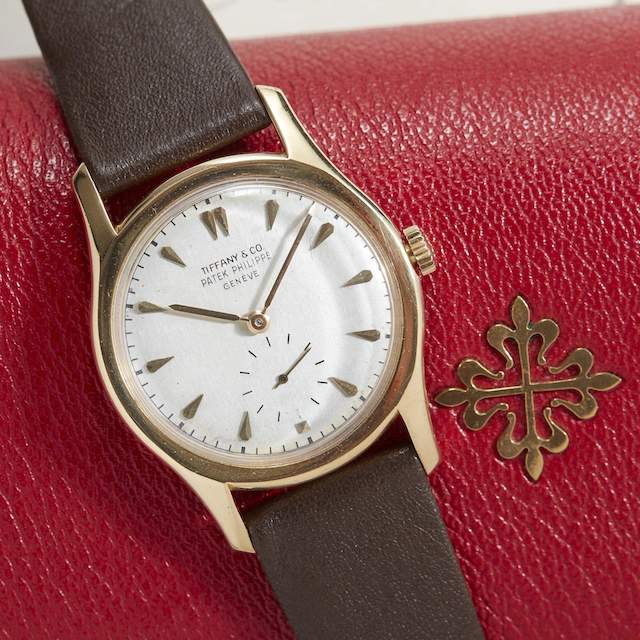
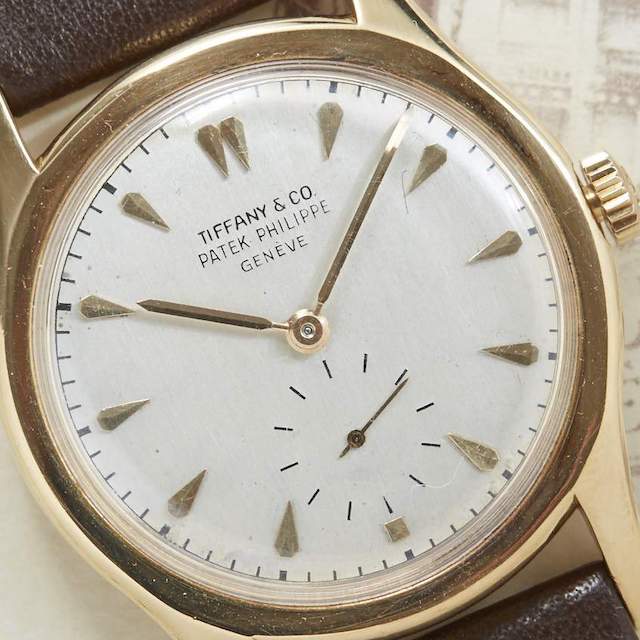
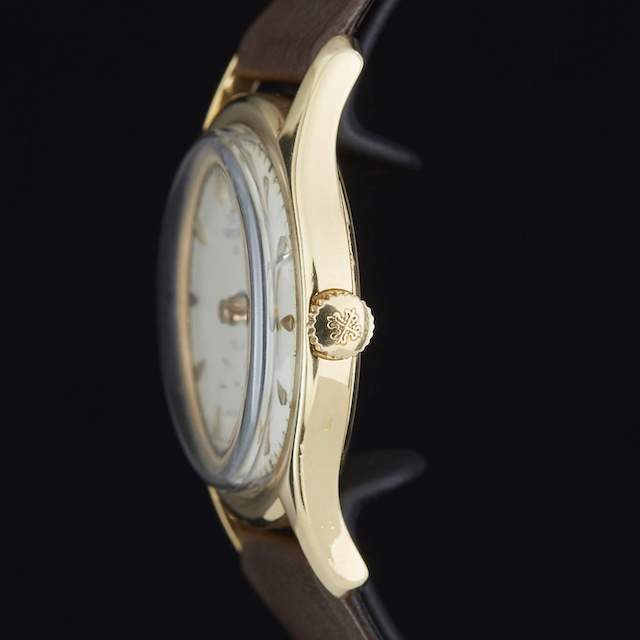
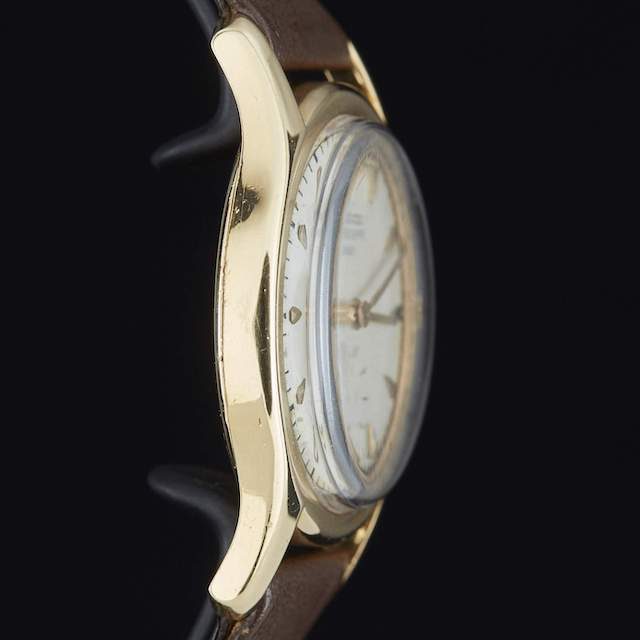
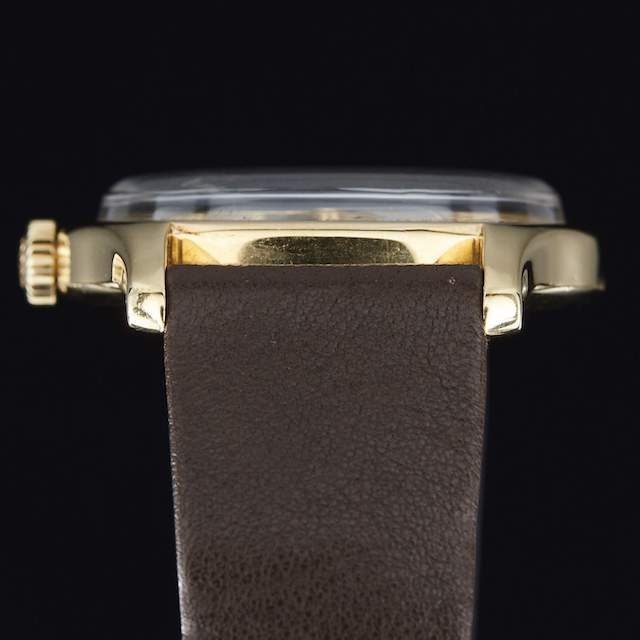
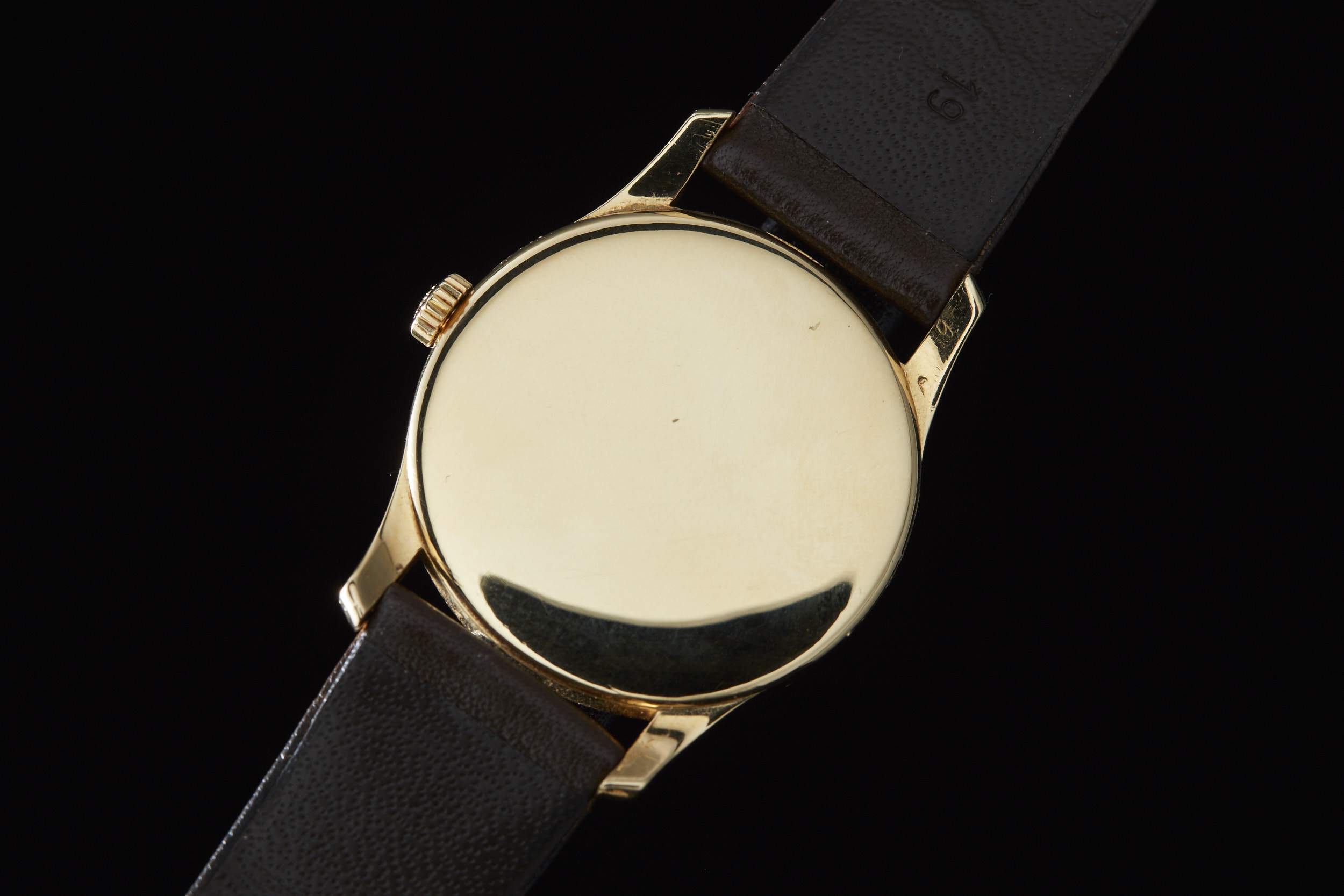
Patek Philippe Calatrava Tiffany & Co.
Korean War begins when North Korean Communist forces invade South Korea.1950 Patek Philippe Calatrava Tiffany & Co. ref. 2464, Calibre PP 10-200
Manufactured in 1950, this Patek Philippe Calatrava Calibre PP 10-200 is a thin and delicate watch as anyone would expect from a Calatrava. Its case is 32.5mm, and the silver dial is simple, elegant, with applied gold markers and sub-seconds at six o’clock.
The dial also holds a secret, visible above the manufactures name at twelve o’clock: a second signature, that of the venerable jeweler Tiffany & Co.
The relationship between Patek Philippe and Tiffany is an old one. It started as early as 1851, when the jeweler first began offering watches made by Patek Philippe in its stores. Throughout the years the two companies have maintained that bond, which is proudly proclaimed on the dials of some of those watchesthis one among them.
The Calatrava series was born in 1932 when brothers Jean and Charles Henri Stern purchased a controlling interest of Patek Philippe, and soon set their minds to developing a product that would revitalize the company after the Stock Market Crash of 1929 and Great Depression. And since the company’s reputation rested on the minute repeaters and perpetual calendars beloved of royalty, the brothers sought to move the new series in a opposite direction.
Aware of the prevailing trend in Europe was for simple, streamlined designs typified by the Bauhaus School, the Sterns enlisted the help of English watch designer David Penney to create a watch that distilled the Bauhaus tenets to their simplest principles: Gesamtkunstwerk (total work of art) a concept that dominated European art and design until the outbreak of World War II and preached that there could be nothing superfluous about it: no flourish or folderol unless it added to the functionality of the piece.
For the name of this watch, the brothers reached deep into the annals of history. They found reference to a symbol that knights emblazoned on their banners, which was taken from the very city they defended. The city was Calatrava, and the symbol that the knights bore on their bannersthe Calatrava crosswould go on to adorn the movements of this watch, the Patek Philippe Calatrava.
The Calatrava did as the Stern brothers intended, and has become the company’s most iconic watch, the centerpiece of its collection.
Polish watchmaker Antoni Patek started making pocket watches in 1839 in Geneva. In 1845 Patek joined with the French watchmaker Adrien Philippe, inventor of the key-less winding mechanism. Patek Philippe & Co was founded in 1851.
It designs and manufactures timepieces and movements including some of the most complicated mechanical watches. It is considered by many experts and aficionados to be one of the most prestigious watch brands along with Audemars Piguet, Vacheron Constantin, and A. Lange & Sohne.
Patek Philippe pioneered the perpetual calendar, split-seconds hand, chronograph, and minute repeater in watches.
In 2012, the company produced 50,000 watches.
Patek Philippe timepieces have recorded high prices in auctions worldwide. A large part of the demand for auction pieces is driven by Patek Philippe themselves, as they are often purchasing in the auction market to add to the collection of the Patek Philippe Museum in Geneva.
Submitted by Analog Shift.
